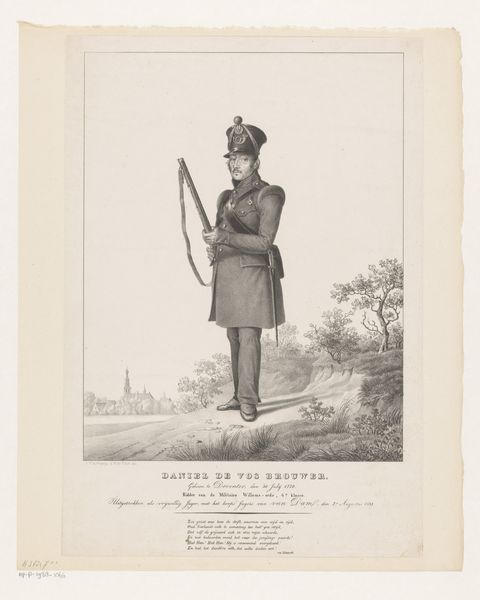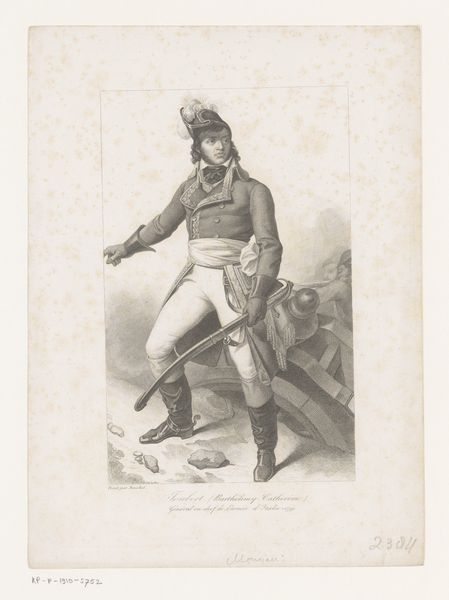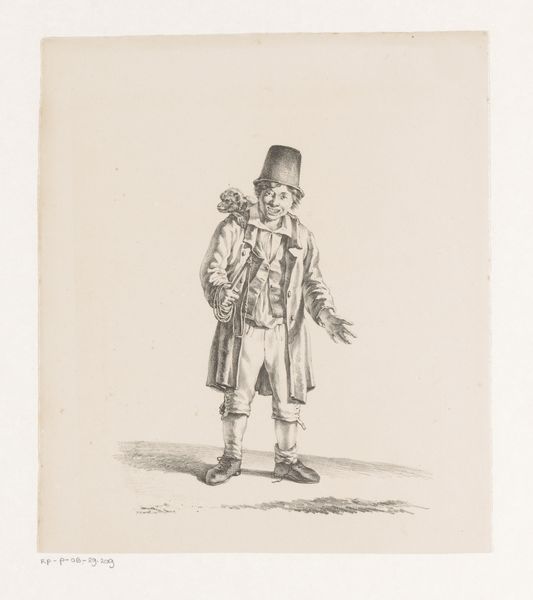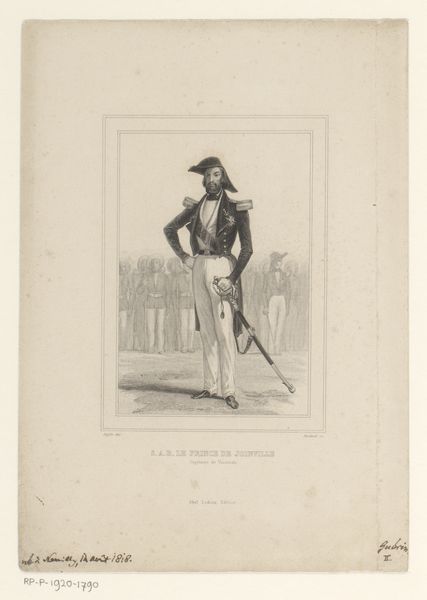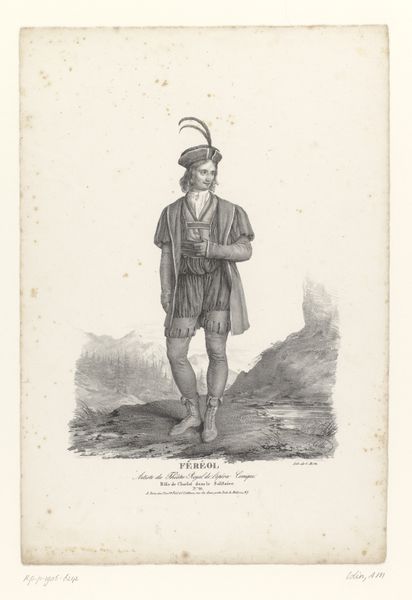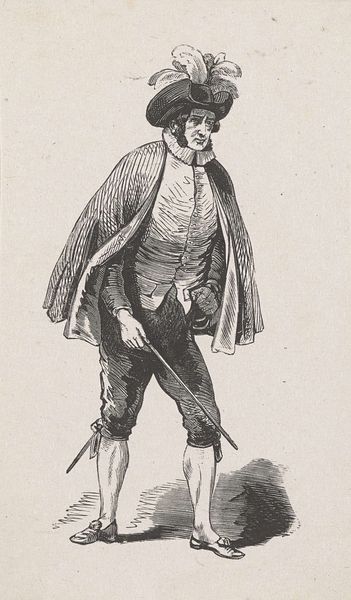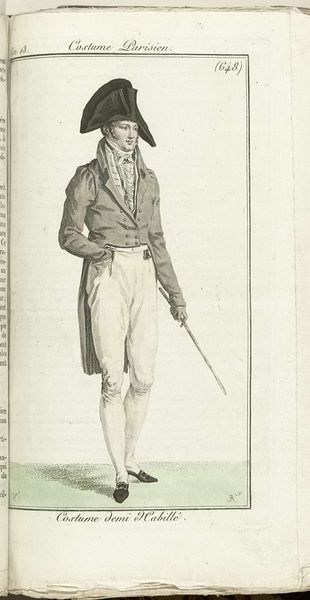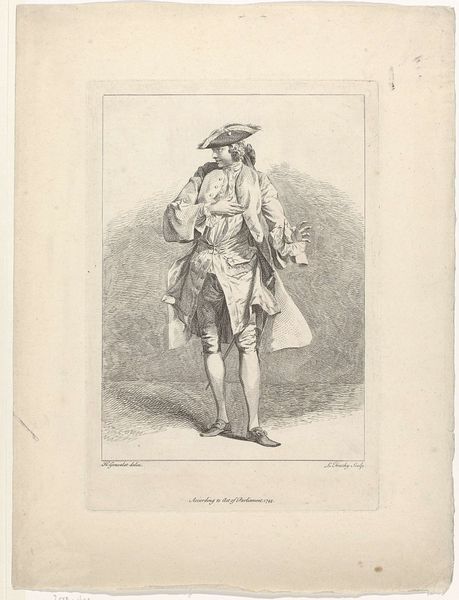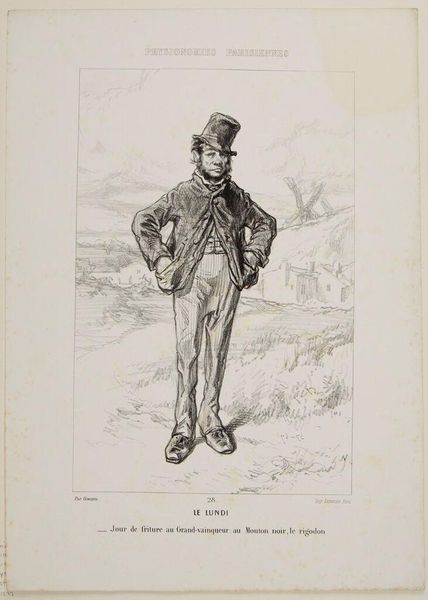
Portret van Augustin Lemonnier als Henriquez in de opera Le Muletier 1824
0:00
0:00
print, engraving
#
portrait
# print
#
old engraving style
#
figuration
#
history-painting
#
academic-art
#
engraving
#
realism
Dimensions: height 420 mm, width 288 mm
Copyright: Rijks Museum: Open Domain
Curator: This print, dating back to 1824, is titled "Portret van Augustin Lemonnier als Henriquez in de opera Le Muletier," by Alexandre-Marie Colin. It captures Lemonnier in costume for the opera "Le Muletier". It's an engraving, demonstrating the refined lines achievable in the medium. Editor: My initial impression is one of theatricality blended with perhaps an unsettling formality. There's a performative element, certainly in his posture and garb, but it also strikes me as almost an ethnographic study. Curator: Yes, there's an intentionality in documenting this operatic character. Theatre often crystallizes contemporary trends in identity. Lemonnier is memorialized here within the symbolic dress of the muleteer character. Editor: Muleteers were laborers, and their visual representations were often exoticized and even sexualized, like sailors in picaresque novels, embodying freedom beyond societal restraint. It's interesting to think about how this image might play on or against these visual conventions. Is he truly embodying this counter-cultural spirit, or just performing it for an aristocratic audience? Curator: Notice the precision in depicting his garments—the textures, the details of the embroidery, the set of the hat. It’s not merely a representation of a type, but of a specific moment and performance. The accoutrements of costume lend gravitas through symbolic association. What is captured is also how theatre held space in popular memory and how performance cemented cultural knowledge. Editor: Indeed, the print serves as a time capsule, encapsulating early 19th century operatic traditions. It presents opportunities to understand how power and spectacle functioned together to affect class and politics. Were the producers of the opera reinforcing stereotypes about muleteers, or attempting to elevate them, as heroic figures perhaps? It seems like there is no single clear answer here. Curator: The symbolic power held in dress carries deep associations, speaking to archetypes beyond the bounds of the play itself, evoking larger understandings about the role of labor. That visuality transmits over time. Editor: This reminds us that art isn't created in a vacuum; that performances like Lemonnier's were inextricably linked to broader social, cultural, and economic systems. It makes you consider not only who is represented but the structures that gave shape to that representation. Curator: Exactly. It makes one appreciate how performance itself can function as historical record— and that that record holds symbolic and psychological heft for subsequent generations.
Comments
No comments
Be the first to comment and join the conversation on the ultimate creative platform.


